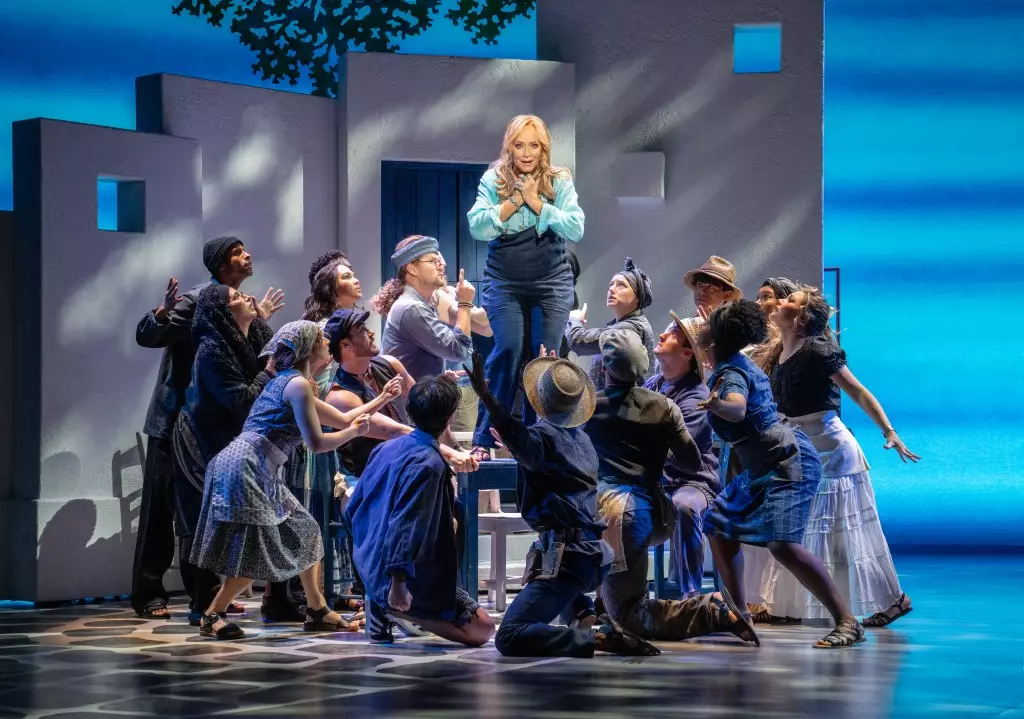Despite a sluggish summer for many established shows, Broadway continues to demonstrate resilience and an enduring appeal that defies the typical industry slump. This past week’s box office data reveals a compelling narrative: fresh debuts and revival hits are not just surviving but thriving in a landscape marred by slow ticket sales and shifting audiences. The revival of *Mamma Mia!* exemplifies this phenomenon, breaking expectations with a robust start that signals a promising future for breakthrough productions even as older favorites experience fluctuations. The broader industry, though facing dips, showcases a remarkable capacity for reinvention and the continual reassertion of its cultural significance.
The Power of Nostalgia and New Beginnings
The recent success of *Mamma Mia!* underscores how nostalgia remains a potent force on Broadway. Returning to the Winter Garden Theatre with a limited engagement, the musical’s initial preview sold out spectacularly, grossing nearly a quarter of a million dollars. Audiences are eager to revisit familiar, beloved stories—especially when they’re paired with timeless hits from ABBA that continue to resonate with multiple generations. This revival not only capitalizes on the original’s magnetic appeal but also injects fresh energy into the scene, proving that well-crafted classics still hold immense commercial and emotional power.
Conversely, established blockbusters like *The Lion King* and *Wicked* continue to anchor the box office, but their steady grosses highlight a dichotomy: steady dominance of old favorites versus the risky but rewarding gamble of new productions. The industry’s vitality depends on this delicate balance—reviving past successes while cultivating new, innovative shows that can capture the imagination of contemporary audiences.
Challenges and Opportunities in a Transition Phase
While blockbuster hits command attention, the overall box office performance hints at underlying vulnerabilities. The week saw a modest 5% decline in gross revenue compared to the previous week, reflecting the typical impact of August’s “dog days.” Smaller or less-established productions struggle to attract consistent audiences, with some shows filling just over half their seats. This variability forces producers to reevaluate their marketing strategies and the viability of niche or experimental projects.
Yet, even amidst these challenges, opportunities abound. For instance, high-profile productions such as *Just In Time* and *Harry Potter and the Cursed Child* maintained strong earning power, reinforcing the importance of star power and known franchises. Notably, *Just In Time*, a Bobby Darin bio-musical starring Jonathan Groff, commanded the highest average ticket price, indicating a segment of the market willing to pay a premium for star-driven performances. This trend suggests that star power and brand recognition remain crucial tools for navigating uncertain economic waters.
The Economics of Broadway: Ticket Prices and Audience Trends
An analysis of ticket pricing reveals intriguing insights. The average ticket price across all 28 shows hovered around $127, but premium productions are charging significantly more—up to $232 for *Just In Time*. This differentiation highlights a strategic approach: capitalize on exclusivity and star appeal to maximize revenue. The gap in attendance percentages—ranging from over 95% for top-tier shows to less than 60% for others—also underscores the importance of show popularity in audience engagement.
Nevertheless, rising ticket prices pose a double-edged sword. While they bolster revenue, they risk alienating budget-conscious theatergoers, particularly in an uncertain economic climate. The industry thus faces a delicate balancing act: maintaining accessible prices to fill seats while optimizing profits through premium offerings. Moreover, the modest Year-to-Date revenue increase of 10% hints at a recovering confidence in Broadway’s economic resilience, driven partly by diversified programming and strategic pricing.
Looking Forward: The Long-Term Prospects of Broadway Revival
Broadway’s future hinges on its ability to adapt and innovate. The recent success of revivals like *Mamma Mia!* and the continued strength of established hits exhibit a market eager for both familiarity and fresh storytelling. The potential of new productions to capture the zeitgeist and attract younger audiences is essential for long-term growth. The industry must harness its creative energy to develop shows that resonate culturally while offering compelling entertainment value.
Despite some shows struggling with attendance, the overall financial health of Broadway remains encouraging, with gross revenues and attendance figures trending positively compared to previous years. This resilience signifies a theater landscape that, while facing present hurdles, possesses the capacity to bounce back stronger. The ongoing investments in new projects, star-driven shows, and revivals will determine if Broadway can sustain its stature as the world’s premier live entertainment hub.
Broadway’s true strength lies in its symbolic power—the ability to galvanize communities, inspire creators, and evoke profound emotions in audiences. As new productions emerge and old favorites bask in renewed attention, the scene is set for a season of bold reinvention and enduring cultural relevance.
